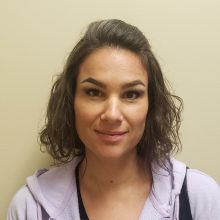Admissions
Join the Sumner Family
Request Information
Admissions
We are committed to helping every student make the right choice for their career. When you visit one of our campuses, our admission representatives will guide you on a tour of the facility and answer any questions you may have. You’ll meet instructors and students, as well as speak with Financial Aid to learn more about your funding options and other resources for students like the Sumner Scholarship, Veterans Benefits and the Sumner College High School Scholarship.
If you would like to set up a time to visit one of our campuses, please Book a Tour, or complete a Request More Info form. If you would like to speak with someone immediately, please call us at 503-972-6230. If you prefer, you can use Live Chat feature on this page to speak to someone now.
You can also complete our Online Application and a Sumner College Admissions Representative will contact you.
Booking Links to the BSN and PN Testing Calendar:
Learn more:
Admission Requirements
General Admissions Requirements
A high school diploma or recognized equivalency certificate (GED) is required.
All applicants are required to complete an initial interview with admissions. Parents and spouses are encouraged to attend the interview
In addition, the following requirements apply to specific programs:
Practical Nursing Program
Practical Nursing applicants are required to take the Accuplacer test, write three essays, complete the Practical Nursing Application and provide two references. All students are responsible for meeting the requirements set forth in the college catalog.
Bachelor of science Degree in Nursing
BSN applicants are required to take the Test of Essential Academic Skills (TEAS) Exam, write 4 essays, complete the Bachelor of Science Degree in Nursing application and provide one letter of recommendation. Please see the BSN packet for additional information regarding admission requirements and the selection process.
RN to BSN Program
Applicants must be a graduate from an accredited Registered Nursing Program, with a GPA of 2.0 or higher, and hold or acquire an unencumbered nursing license in the state in which they will practice.
If you have any questions, or would like to learn more about the admissions requirements, please call us at 503-223-5100, or toll free at 877-682-5601.
As you go through your studies at Sumner College, we want to make sure you stay informed about policies regarding the campus, financial aid and other resources that are available to help keep you on the track to success.
You Should Know:
- The description of all the federal, state, private and institutional financial assistance programs, both needs-based and non-needs-based, are available to you and can be found in the college catalog.
- Information about the terms and conditions under which you can receive Federal Direct Loans, as well as the procedures and forms you need to apply, is available in the Financial Aid Office. They can also explain the criteria for determining the amount of your potential award.
- The criteria you must meet to continue your eligibility under each aid program, the standards you must meet to be considered to be making satisfactory progress and, if you have failed to maintain satisfactory progress, how you may reestablish eligibility is explained in the college catalog.
- The Financial Aid Office can also explain how your financial assistance disbursements will be made and the terms of any loan you are eligible to receive, including a sample repayment schedule.
- If you received a student loan while you were here, you must visit the Financial Aid Office to complete an exit interview to review your responsibilities as a borrower prior to leaving the college.
What you can find in the college catalog
- The cost of attending school in your program of study
- The college refund policy
- The requirements and procedures for withdrawing from school
- What happens to the money if you return a Title IV grant or loan
- All the programs of study currently offered by the college, the instructional resources for each program, and the faculty
- The organizations that accredit, license and approve the college
- A description of the services and facilities for students with disabilities
- The people designated to assist you with financial aid information, school information, graduation and completion rates, and campus security policies and crime rates
- A description of the transfer of credit policy for work completed at another school and whether any other schools accept the work completed at Sumner College
- Who to contact to review documents regarding the college’s accreditation, approvals or licensure
- Information about required immunization and health records

Jami
RN
“The ADN program at Sumner College is the second nursing program that I have completed successfully, this last time of which enabled me to fulfill my dream of becoming an RN.”
Read Full Spotlight







LPN V.S. BSN at Sumner College
Understanding the Difference Between LPN, RN, and BSN — and How Sumner College Can Help You Get There When considering a career in nursing, it's…
Share at FacebookShare at TwitterShare at PinterestShare at LinkedIn
WHY EARNING A BSN IS WORTH IT
Why Earning a Bachelor of Science in Nursing (BSN) Is Worth It—Especially at Sumner College Nursing has always been a calling, but today it’s also a…
Share at FacebookShare at TwitterShare at PinterestShare at LinkedIn
A BSN From Sumner College
Begin Your Nursing Career with a BSN from Sumner College in Oregon If you're looking to start a meaningful and rewarding career in nursing,…
Share at FacebookShare at TwitterShare at PinterestShare at LinkedIn
Meet Teresa: Sumner College Graduate
Associate Degree in Nursing Teresa, congratulations on your graduation! As you’ve embarked on your nursing journey, remember: ‘Nursing is not just a profession, it’s a…
Share at FacebookShare at TwitterShare at PinterestShare at LinkedIn
Meet Ana: Sumner College Graduate
Congratulations, Ana! Your hard work, heart, and perseverance have brought you to this incredible milestone. As you begin your journey in nursing, remember: “Nursing is…
Share at FacebookShare at TwitterShare at PinterestShare at LinkedIn
Meet Misty: Sumner College Graduate
Associate Degree in Nursing Misty, congratulations on your graduation! As you’ve embarked on your nursing journey, remember: ‘Nursing is not just a profession, it’s a…
Share at FacebookShare at TwitterShare at PinterestShare at LinkedIn
AI in Nursing: A Trial
AI Note-Taking Tool Gives Nurses More Time for Patients at East Lancashire Hospitals In a forward-thinking move to streamline healthcare and reduce administrative burdens, East…
Share at FacebookShare at TwitterShare at PinterestShare at LinkedIn
Bend Health Fair
Thank you to all who stopped by to say hi at the Bend Health Fair! What a great weekend! Have additional questions? Send us a…
Share at FacebookShare at TwitterShare at PinterestShare at LinkedIn
New Start, May 12!
Congratulations to our newest BSN cohort starting class on Monday in both Portland and Bend! Your new adventure awaits at Sumner College, Dream it Do…
Share at FacebookShare at TwitterShare at PinterestShare at LinkedIn
How Learning Style Impacts You
Welcome to “Understanding Your Learning Style” Unlock Your Academic Potential by Discovering How You Learn Best Have you ever wondered why some study methods work…
Share at FacebookShare at TwitterShare at PinterestShare at LinkedIn
RN Wages
A recent survey conducted by Incredible Health found that registered nurses (RNs) in Oregon earn an average annual salary of $98,630, or approximately $47.42 per…
Share at FacebookShare at TwitterShare at PinterestShare at LinkedIn
TEAS Exam Time!
The TEAS exam is a vital part of the admissions process and an important step toward your future in nursing. To help you prepare, we’ve…
Share at FacebookShare at TwitterShare at PinterestShare at LinkedIn
This week’s Information Sessions
Head over to one of our campuses for a great info session this week! In these sessions, you’ll learn about the application process, including how…
Share at FacebookShare at TwitterShare at PinterestShare at LinkedIn
Changing the Nursing Narrative
The American Nurses Enterprise (ANE- associated with American Nurses Association) has launched a bold new initiative aimed at redefining how society understands and measures the…
Share at FacebookShare at TwitterShare at PinterestShare at LinkedIn
Information Q&A
🌟 Discover Your Calling in Healthcare – Join Our BSN Info Session! 🌟 Sumner Nursing College | Bachelor of Science in Nursing 📅 Classes Begin:…
Share at FacebookShare at TwitterShare at PinterestShare at LinkedIn
Information Sessions
Are you ready to take the next step toward a rewarding career in healthcare? At Sumner College, we are committed to providing you with the…
Share at FacebookShare at TwitterShare at PinterestShare at LinkedIn
Bend, in May!
Take a sneak peek into one of our brand new classrooms at our Bend campus, on campus information sessions are held once a week, register…
Share at FacebookShare at TwitterShare at PinterestShare at LinkedIn
Sumner College Student of The Month | February 2025
Congratulations Josephiene for being the February 2025 Student of the Month at Sumner! CONGRATULATIONS ON YOUR ACCOMPLISHMENT! Meet Josephiene, a dedicated nursing student whose passions…
Share at FacebookShare at TwitterShare at PinterestShare at LinkedIn
TEAS Exam Time!
The TEAS exam is a crucial part of the admissions process and a key step toward your nursing career. To help you prepare, we’ve gathered…
Share at FacebookShare at TwitterShare at PinterestShare at LinkedIn
Nursing in Oregon
Become a Nurse at Sumner College Nursing School in Oregon! Ready to start a rewarding career in healthcare? Sumner College Nursing School offers a…
Share at FacebookShare at TwitterShare at PinterestShare at LinkedIn
International Women’s Day
Thank you to all of the women in our lives, including the majority of our nursing occupations!…
Share at FacebookShare at TwitterShare at PinterestShare at LinkedIn
Apply Today!
Ready to start your nursing career? At Sumner College Nursing School, we offer hands-on training, personalized support, and a pathway to success in the healthcare…
Share at FacebookShare at TwitterShare at PinterestShare at LinkedIn
Become a Nurse!
Nursing offers numerous advantages, making it a rewarding career choice. The profession boasts excellent job security, with a projected 6% growth rate among registered nurses…
Share at FacebookShare at TwitterShare at PinterestShare at LinkedIn
First Day!
Happy first day to our latest BSN cohort, and welcome to the Bend campus!…
Share at FacebookShare at TwitterShare at PinterestShare at LinkedIn
Is Nursing School for Me?
Nursing school is not just an opportunity to build a rewarding career; it’s a chance to make a real difference in people's lives every day.…
Share at FacebookShare at TwitterShare at PinterestShare at LinkedIn
Bend Countdown!
Welcome to Bend! We are excited for our first Bend BSN Cohort to start! Feel free to contact us with any questions!…
Share at FacebookShare at TwitterShare at PinterestShare at LinkedIn
Studying for the TEAS Exam
As part of the admissions process, the TEAS exam is an important step toward your future in nursing. We've compiled a list of helpful resources,…
Share at FacebookShare at TwitterShare at PinterestShare at LinkedIn
What Kind of Nurse Should I Be?
There are many different kinds of nurses, some you may not know had a specialty, including: Case Management, Neuroscience, Telephone Triage, and Forensics. Regardless of…
Share at FacebookShare at TwitterShare at PinterestShare at LinkedIn
17 Days until Bend Launches!
With just 17 days until our first class of BSN's start in Bend, be sure to reach out to our admissions representatives to get all…
Share at FacebookShare at TwitterShare at PinterestShare at LinkedIn
Helpful Hints!
Nursing students often face a variety of challenges, from long study hours to the financial strain of tuition. The coursework and exams can be intense,…
Share at FacebookShare at TwitterShare at PinterestShare at LinkedIn